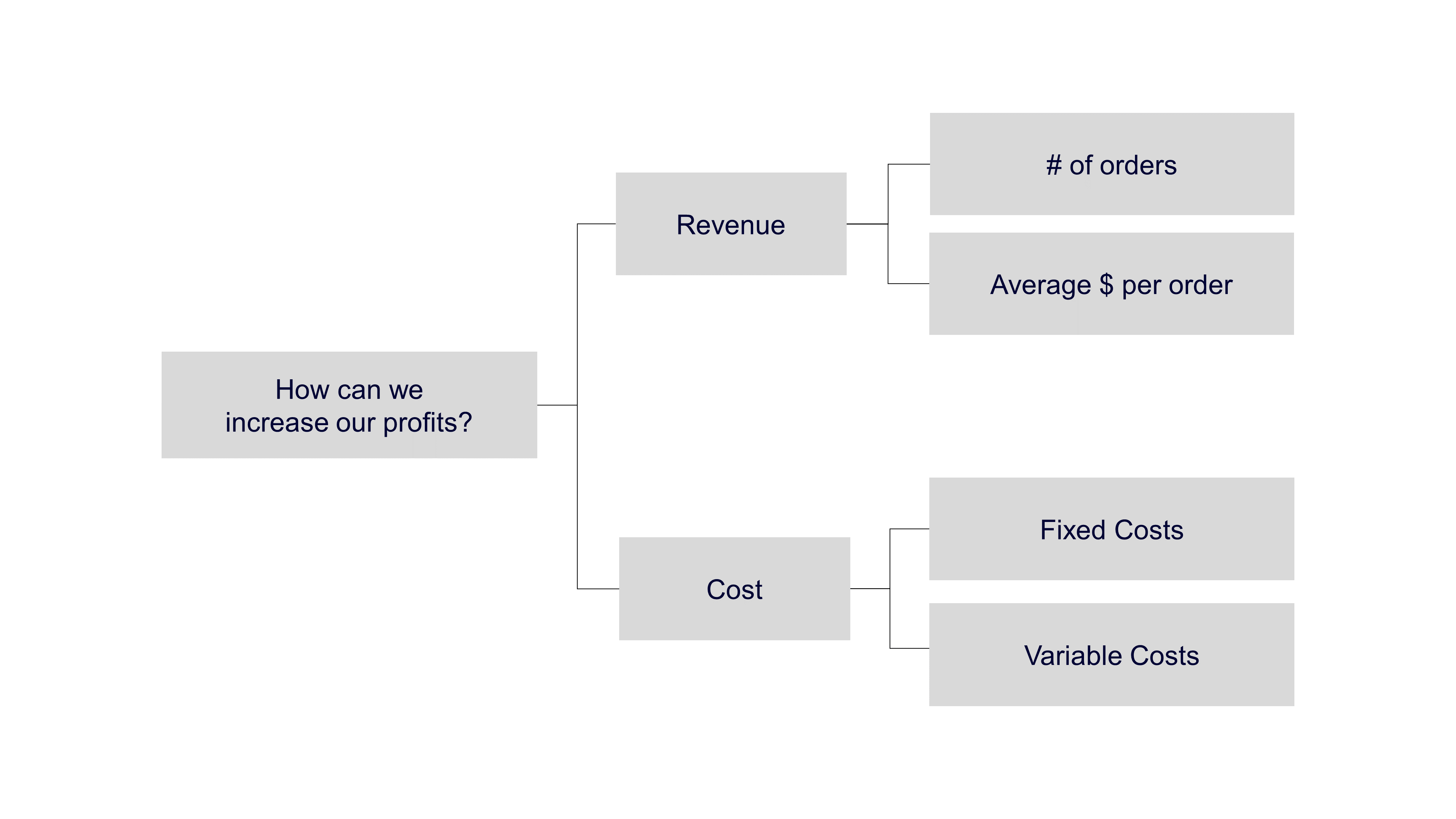An issue tree, also called a problem-solving tree, is a tool that breaks down complex problems into smaller parts. It shows the different parts of a problem, highlights connections, and helps us understand the issue clearly.
Identifying the Problem
Let’s begin with a typical business problem, “How can we increase profits?” At a glance, it’s a simple question, but it conceals an intricate web of factors. Identifying these factors and their interrelations without a structured approach can be challenging.
From Main Problem to Sub-Issues
This is where the issue tree steps in. The first step in creating an issue tree is to identify the main problem.

Following this, we break down the main problem into smaller sub-issues. The number of sub-issues will depend on your main problem, but for this example, we just need two: ‘Revenue’ and ‘Cost.’

Branching Out
Delving deeper, under “Revenue”, we could have sub-issues like “# of orders” and “Average $ per order.” Conversely, “Cost” could branch into “Fixed Costs” and “Variable Costs”.

Understanding Your Issue Tree
At this point, your issue tree gives a clear, organized view of the problem. It lets you tackle each sub-issue one by one, making the whole problem easier to handle and helping you find specific solutions. This setup also helps with task delegation, allowing each team to focus on a different sub-issue.
Conclusion
In summary, issue trees turn complex problems into manageable challenges you can solve. They can help you tackle issues in business, policy, or personal life. By using an issue tree, you make problem-solving more effective and efficient.
To learn more about data storytelling and other learning opportunities related to data communication, check out our scheduled workshops or contact us to set up a special class.
Learn with us and earn your certificate. See you at our next workshop!


